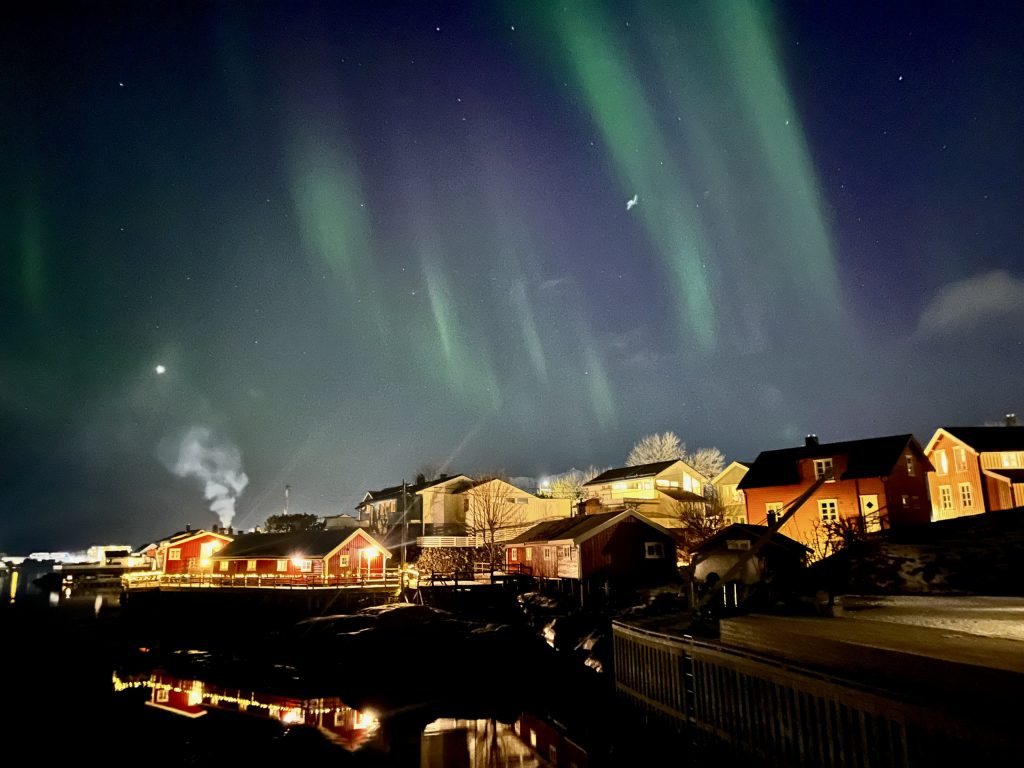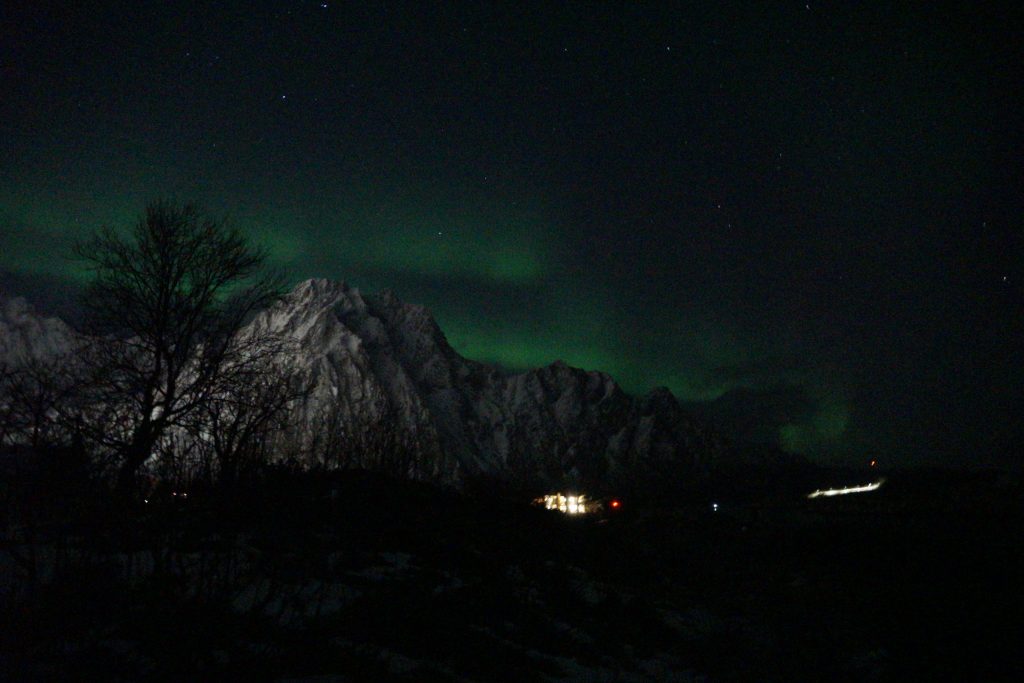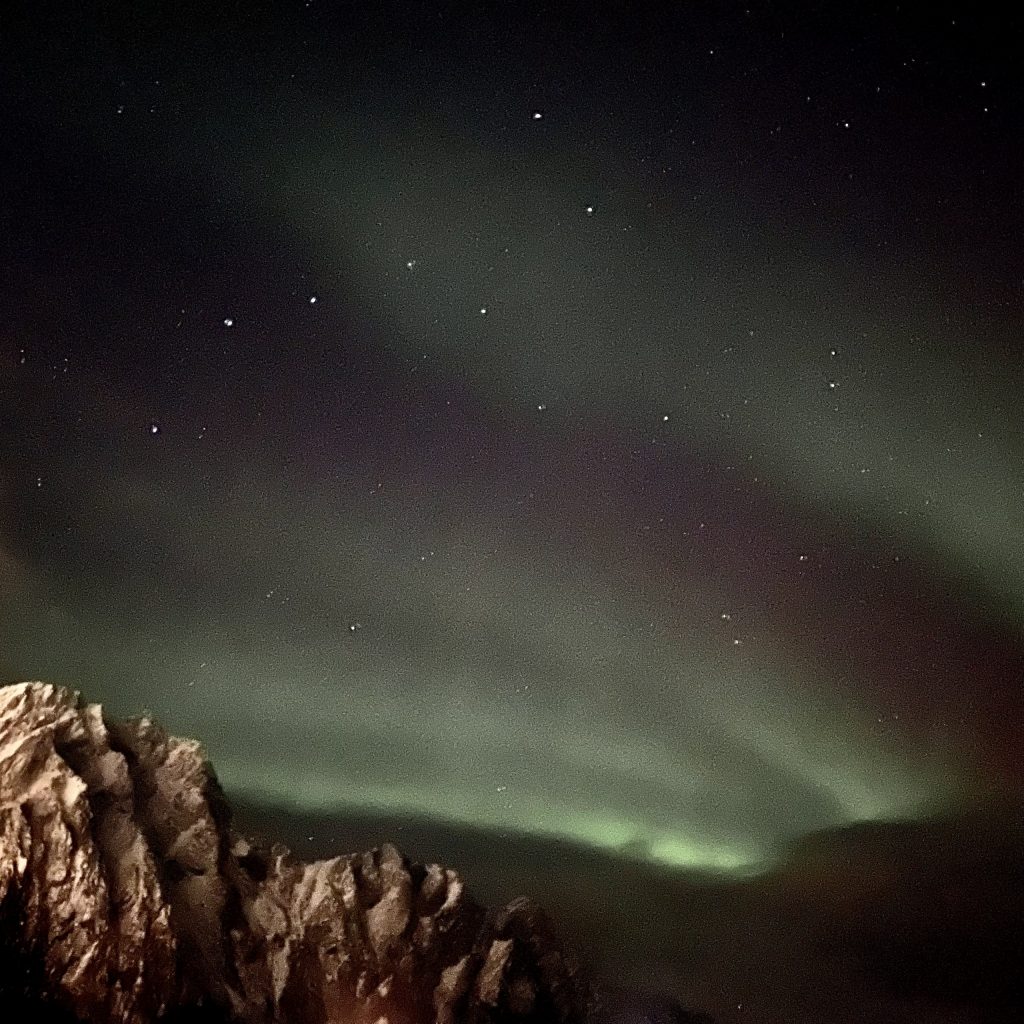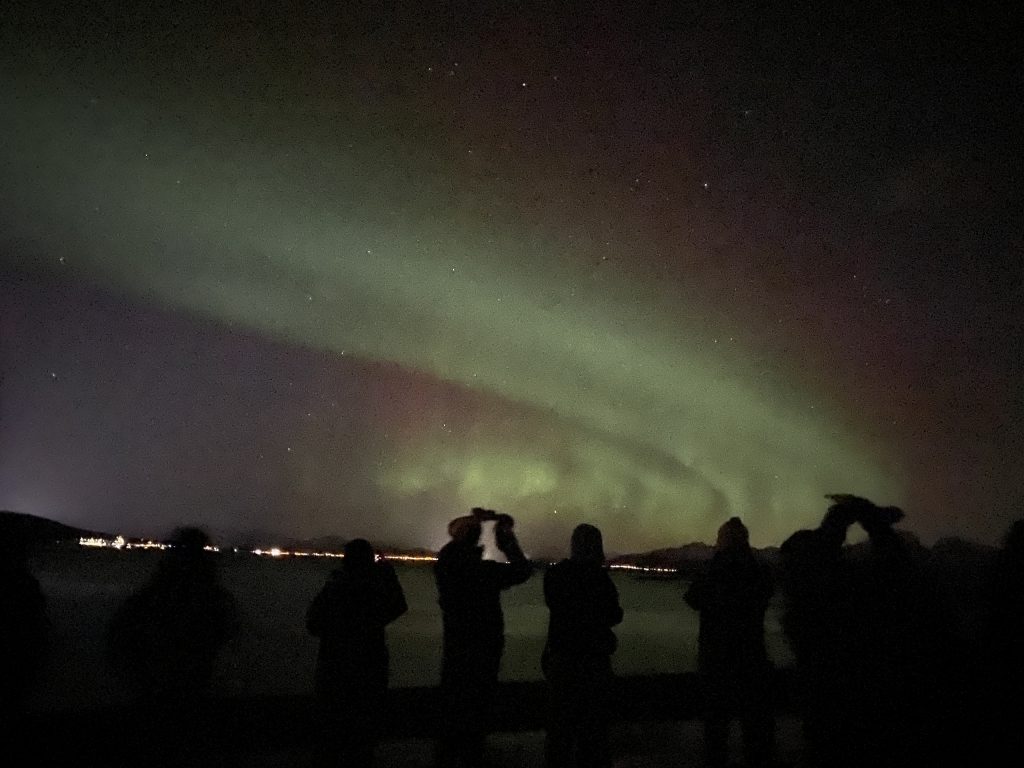By Kieran, Hailey, Andre, and Roxi
Our group had the pleasure of hunting—and finding!—Northern Lights over Svolvær this past Friday. It was an en-LIGHTENING and ILLUMINATING experience for all, and the high-LIGHT of the trip for many. As we cozy up in our cabins and reflect on WATT a beautiful work of art the world can be, we’ve been thinking about how lucky we were to have this experience and all the people we’ve shared it with, past and present. This blog attempts to illuminate our readers with a fragment of the joy that this trip has brought us (sorry not sorry for the puns)!
This isn’t our first time trying to see the Northern Lights. Last year St. Olaf was lucky enough to be in the path to see them, but many of us weren’t successful. Even though Northfield is a pretty small town, there was still too much light around us to be able to see them with bare eyes. In order to get a glimpse we would have had to do so through a camera lens. The experience here in Norway was much different. Once we drove out far enough, it was plenty dark and when we looked up we could see the green across the sky quite clearly, even if it wasn’t particularly defined. The sight was even better once we had been standing outside for a while off of our phones. As our eyes adjusted to the dark, the lights appeared even brighter against the sky. A few days later, we were lucky enough to be able to see them very clearly from our cabins, a phenomenon our guide told us only happens a few times a year.

A few of our group brought cameras with us on Friday, hoping to be able to capture the beautiful phenomenon. Cameras, including phone cameras, are actually able to see the Lights better than the human eye; this is because cameras are able to have a longer exposure time, meaning the amount of time that they are able to take in light. However, despite this advantage, I still personally struggled with getting clear photos of the Lights. A lot of them came out grainy, probably due to the lack of light, and I was unsure of how to fix this. However, I was still able to capture vibrant pictures of the Lights that I’m very happy with.

Across our Journey North we’ve learned about several cultures who have reacted to the Lights in different ways over time. The Sámi are an indigenous population that spans across Sweden, Norway, Finland, and Russia. They were nomadic people known for their reindeer herding, fishing, and overall adaptation to the arctic climate. Like many indigenous populations, the Sámi have been ravaged by assimilation, forced displacement, and cultural erasure by an oppressing government. Despite this mistreatment the Sámi have developed a beautiful culture. The Sámi word for the Northern Lights is “guovssahas”, meaning the lights you can hear (Gasperini and Massaccesi). They believed guovssahas were considered a powerful force and a bad omen that could bring misfortune to any disrespectful observers (Gasperini and Massaccesi). The Northern Lights have been influential for many arctic cultures. The Vikings can be assumed to have also witnessed the Northern Lights. Since the Viking’s written records are minimal, we can only assume what they believed about the Northern Lights. The Northern Lights could represent fallen warriors and Valhalla, or the rainbow bridge called the Bifröst that connected the human realm, Midgard, and the God realm, Asgard (Williamson). Despite the many interpretations of the Northern Lights, no one can argue how impressive they can be. No wonder why people flock to this beautiful country.

Although the Northern Lights don’t attract many permanent migrants, they drive a thriving tourism industry, which we happily contributed to on Friday. Our guide told us that tourism now contributes around 25% to the Svolvær economy, and that he himself has been chasing the Northern Lights for over 30 years. The increased focus on tourism makes sense given the relative decline of the fishing industry across Norway, as we also saw in Stavanger (though that was due to the discovery of oil), and as a result many of the businesses downtown are geared towards the over 20,000 winter tourists and over 145,000 summer tourists Svolvær hosts, rather than the roughly 4,000 people who live here full time. Our tour guide mentioned that Svolvær attracts a lot of Asian tourists, which is interesting because only one of the top ten countries of origin for Norwegian immigrants is in Asia: the Philippines at number nine, as we learned in class. Regardless of where we all come from, our group was very grateful to participate in the search for Northern Lights which unites hundreds of thousands of tourists in Norway each year, and to find them not once but twice over just a few days.

The Northern Lights definitely lived up to the hype. We hope everyone who seeks them out is just as de-LIGHT-ed as we were to find them!
Sources:
Gasperini, Claudia, and Maurizio Massaccesi. Northern Lights, Myths & Legends, Lofoten Lights, www.lofotenlights.com/northern-lights-myths-legends/. Accessed 28 Jan. 2025.
Williamson, Jonathan. “What Did the Vikings Think of the Northern Lights?” The Viking Herald, 1 Oct. 2024, thevikingherald.com/article/what-did-the-vikings-think-of-the-northern-lights/1029.